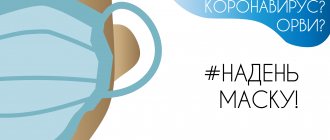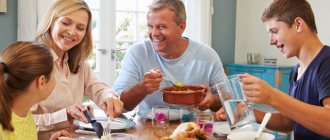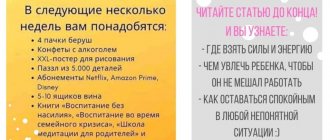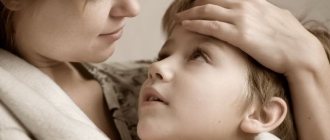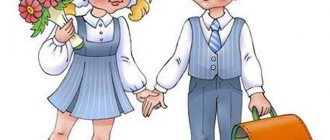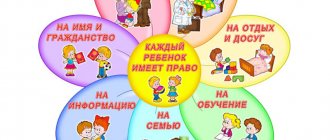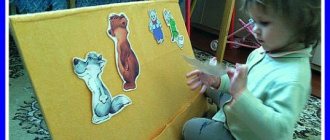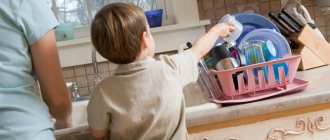Consultation for parents. Winter injuries in children consultation on the topic
Consultation for parents
"Winter injuries in children"
Winter. What a wonderful time of year! Skis, skates, a slide, a snow woman, a snow town, snowballs - we have loved all this since childhood. When else, if not during the holidays, can you have plenty of fun on the street, sledding, skiing and skating! And the celebration of New Year and Christmas itself leaves room for fun, both at home and on the street. But the main thing is to remember to be careful. Especially when it comes to a child. After all, fun is fun, and the risk of injury in winter increases significantly. Indeed, in addition to immediately noticeable bruises and abrasions, injuries are fraught with more dangerous internal damage. Most often in winter, children are injured by falling. Fortunately, in children it usually ends with bruises, sprains and dislocations of the limbs. Fractures are much less common and usually occur without displacement of bone fragments. And only in very rare cases does a child receive an open fracture. Therefore, we adults must take care that our walks are not saddened by childhood traumas and tears. Is your child properly dressed and wearing shoes? Does he have special clothes for walking?
So, how to protect your child from winter injuries, and what do you need to know about first aid?
Precautionary measures
In icy conditions you need to be careful and avoid slippery places. When purchasing shoes, preference should be given to shoes with ribbed soles. If your child's boots or shoes have smooth soles, contact a shoe repair shop and ask them to adjust the shoes for winter. We take shoes one size larger so that you can wear warm socks. At home, it is sometimes recommended to stick a regular patch on the sole, but of course it won’t last long. It is especially important that the shoes are comfortable and do not rub.
The best way to wear a hat is to have ties so that if it falls, it won't fall off your head. To soften a head blow. The scarf should be short so that the child does not get caught on it. Don't forget about mittens or gloves.
Help with injuries
The main thing to remember is that you should not self-medicate and put off visiting a doctor until the last minute.
Sprain
Symptoms: sharp pain when moving, swelling, bruising. What to do?
Apply a bandage (elastic bandage), ensuring the joint remains immobile, and consult a doctor. To reduce swelling, you can apply a cloth soaked in cold water or an ice pack to the sore spot (but for no more than 1-2 hours). You can take a pain reliever.
Dislocation
Symptoms are severe pain, swelling, immobility, change in joint shape.
What to do? Do not try to straighten dislocations yourself; this can lead to painful shock for the victim and additional damage. It is necessary to ensure immobility and rest of the damaged joint: hang the arm on a bandage, scarf, belt, put a splint on the leg (for example, flat boards) or bandage it to the other leg. If the hip is dislocated, place the victim on his healthy side, not allowing him to move. To reduce pain, apply an ice pack or cold water to the damaged area and give a pain reliever. In case of emergency, when it is not possible to call a doctor, the patient must be transported to the hospital independently, taking special care.
Fracture
Symptoms are severe, sharp pain, aggravated by moving the limb, sensitivity to even a very slight touch. Swelling and swelling with changes in skin color and change in the shape of the fracture site.
What to do? Ensure complete rest of the damaged bone, apply a splint using improvised means or bandage the damaged limbs to each other or to the body. Give the victim an analgin tablet and apply something cold to the injury site. If there is bleeding, apply a sterile bandage to the wound. Call an ambulance, if possible - transport the victim in a passing car to the nearest medical facility, taking special care.
Head contusions
Symptoms are partial or complete loss of consciousness, nausea and vomiting, slow pulse, changes in blood pressure.
What to do? Lay the victim on his back, turning his head to the side, and put cold on it. Call an ambulance and do not allow the victim to move until it arrives.
Hypothermia:
As a result of prolonged exposure to low ambient temperatures, the child develops chills. Damaged areas of the skin appear as red or bluish-purple lumps in appearance. Chills are accompanied by itching, burning, and pain, which intensifies if the area is quickly warmed up. The legs and arms often become hypothermic.
When getting children ready for a walk, the teacher makes sure that their shoes and mittens are dry. Weak children who have had illnesses need special attention.
A sharp drop in body temperature leads to freezing. A child in this state loses consciousness, the skin turns pale, and the pulse is rare. After taking first aid, frozen people experience drowsiness, weakened memory, and mental disorders. A common complication of freezing is inflammation of the lungs, kidneys, and acute digestive disorders. First aid for a frozen child is to warm him up in a hot bath and at the same time give him a massage. As soon as the child regains consciousness, he needs to be given a hot drink, food, put to bed, urgently call a doctor or taken to a medical facility.
Frostbite:
It is more often observed in children who are weakened and in those who wear too tight shoes. It can be even at zero temperature. Children freeze their fingers and toes, ears, and the tip of their nose.
There are three degrees of frostbite:
Frostbite of the 1st degree occurs with short-term exposure to cold. After warming up, the affected areas of the skin become red and swollen, a slight pain and burning sensation appears. After 2-3 days, the redness and swelling disappear and no traces of frostbite remain on the skin. Frostbite of the 2nd degree occurs with prolonged exposure to cold. When frostbite occurs, the skin turns pale. Bubbles appear later. Filled with light or bloody fluid.
Frostbite of the 3rd degree and 4th degree is possible with prolonged exposure to low temperatures, and not only soft tissues, but also bones die, and gangrene develops. Characterized by fever, general intoxication, restless behavior and chills.
First aid for frostbite is to quickly restore blood circulation to the affected area. Frostbitten hands or feet are warmed in warm water. The damaged area is carefully exposed and immersed in a bowl of water at 18-20 degrees; and give a light massage. Massage begins with fingers upward. During the massage, you need to force the child to move his fingers to quickly restore blood circulation. When completely warmed up, the skin turns bright pink and pain appears. Then the frostbitten area is carefully wiped, wiped with alcohol, a dry sterile bandage is applied and wrapped warmly.
If your cheeks and nose are frostbitten, warm them right outside, rubbing the affected area in a circular motion. You should not rub the frostbitten area with snow, as small pieces of ice can scratch the skin and can also cause infection. It is better to rub with a soft woolen mitten or hand until blood circulation is completely restored. In more severe forms, urgent hospitalization is required.
Consultation for parents “Prevention of child injuries”
Prevention of childhood injuries
Summer is the most favorite time of the year for children. Children play more in the summer, move more, which means that childhood injuries increase in the summer. It is impossible to prevent a child from exploring the world. The job of the parents is to insure him, to prevent a possible tragedy. In a word, to be close, and even one step ahead. In preschool age, children's curiosity, lack of coordination of movements, lack of life experience can lead to burns from a hot stove, dishes, food, boiling water, steam, iron, other electrical appliances and open fire, falling from a bed, window, table and steps, suffocation from small objects (coins, buttons, nuts, etc.), poisoning from household chemicals (washing liquids, bleaches, insecticides, etc.), electric shock from faulty electrical appliances, exposed wires, from sticking needles, knives and other metal objects into sockets . Parents are obliged to prevent possible risks and protect their children from them.
To avoid burns, it is necessary to strictly ensure that children do not tip cups, plates, etc. onto themselves while eating hot food. Do not allow children to be around while cooking, washing dishes, washing clothes, or ironing. Hide matches, lighters, flammable liquids, candles, sparklers, and firecrackers in inaccessible places. Install the stoves high enough or unscrew the burner handles so that children cannot reach them. Sunburn or even heatstroke (overheating) can occur if children are exposed to the sun without a hat.
Toxic substances, medicines, bleaches, acids and fuels such as kerosene, rat and insect poisons should never be stored in food bottles - children may drink them by mistake. Such substances should be kept in tightly closed, labeled containers out of the reach of children.
Glass bottles, knives, blades and scissors should also be kept out of the reach of children. Older children should be taught how to handle these objects carefully. Explain to children that throwing stones and other sharp objects, and playing with knives or scissors is very dangerous. Electrical outlets should be covered to prevent electrical injury to children. Electrical wires should be kept out of the reach of children - exposed wires pose a particular danger to them.
Falls are a common cause of bruises, broken bones, and serious head injuries. Most often this is a fall from a height: garages, fences, climbing trees, open hatches, the saddest cases are falls from windows. Moreover, not only children fall out of windows, but also older children. They can be prevented by: not allowing children to climb in dangerous places, installing guards on steps, windows and balconies. Explain to the child why games are dangerous on construction sites, areas where repair work is being carried out, in abandoned buildings, etc.
It is very important to teach a child safe behavior when riding a bicycle - all these “toys” must be appropriate for the child’s age, be in good working order, and parents should not skimp on equipment (helmet, knee pads, etc.). Parents are obliged to ensure the safety of the child in transport - children must always wear a seat belt and sit in a special seat. This will protect the child from serious injury, and to avoid accidents, children should be taught to walk on sidewalks facing vehicles. Children should know and follow the following rules when crossing the road: stop on the side of the road; look both ways; before crossing the road, make sure that there are no cars or other vehicles on the road; when crossing the road, hold the hand of an adult or older child; walk, but under no circumstances run; Cross the road only in designated places when the traffic light is green.
Parents should teach their children the rules of behavior on the water and not leave their child unattended near bodies of water for even a minute. Violating the rules of conduct on water when swimming and diving often leads to various injuries and even drowning. Children can drown in less than two minutes, so to prevent trouble, children should never be left alone in or near water, and should not dive into unfamiliar bodies of water. It is necessary to cover wells, bathtubs, and buckets of water. Children should be taught to swim starting from an early age. Children should know not to swim without adult supervision.
DEAR PARENTS!
TAKE CARE OF YOUR CHILDREN!
